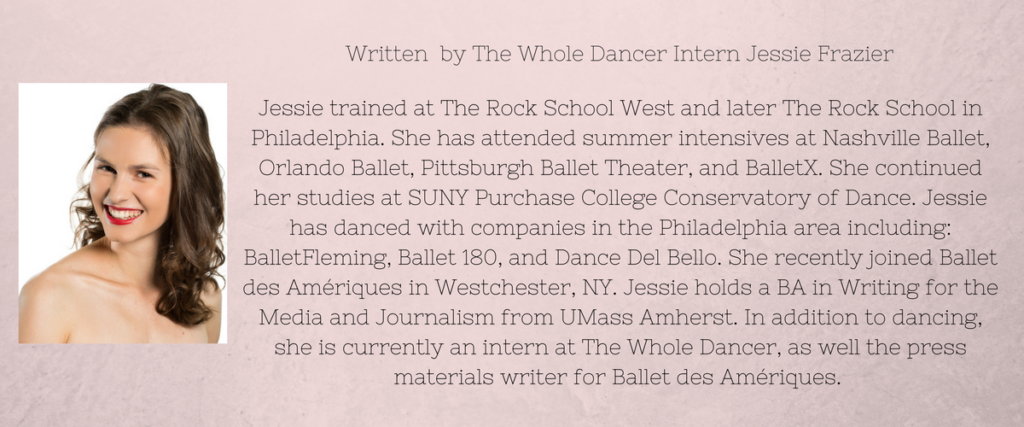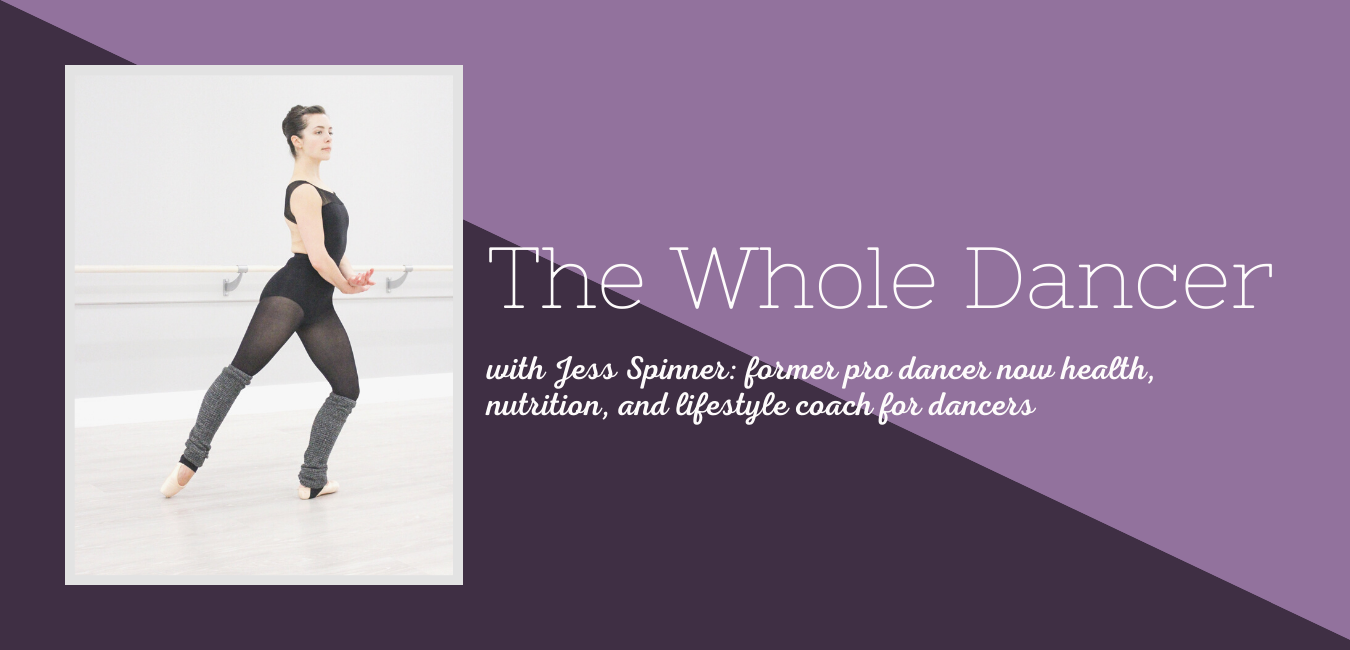Cross Training while Injured
Dancers are a restless creature that are incapable of sitting still. But what do you do when you’re injured? We feel stir crazy sitting on the sidelines watching rehearsals while your injury heals. You worry about losing strength and technique and wonder how long it will take to get it back.
With all of these questions in mind, I talked with Dr. Elizabeth Barchi, Staff Physician at the Harkness Center for Dancer Injuries in New York City about how she creates a cross training plan with her patients while they are recovering from an injury.
“An injury can be a blessing in disguise,” says Barchi. Because dancers are told by teachers every day what to do, as a young dancer, you sometimes struggle with figuring out how to take care of yourself (both physically and mentally) when a teacher is not instructing exactly what to do. The one positive to injuries that Barchi points out is: “Injuries force dancers to learn the responsibility of taking care of your body.”

Many of her patients feel like it’s the end of the world when they are injured and have to take time away from dance. However, she quickly reassures them that an injury doesn’t always mean a complete shutdown. “An injury can be a reset button with your technique,” says Barchi. She works with her patients to find body weaknesses that caused the injury and strengthen it.
“I have the dancer work everything else in the body but the injury,” says Barchi about creating a recovery plan for her patients. “If we isolate an injury, why not work everything else?” She advocates dancers doing cross training methods such as Pilates, gyrotonics, and floor barre that allow patients to strengthen while isolating the injury and putting less stress on the body.
“I have my patients start cross training right away, unless its burnout syndrome or anorexia, or issues that have to do with the entire body,” says Brachi. She will often prescribe physical therapy to her patients, but also gives them freedom to do cross training they are familiar with.
When first starting recovery cross training, use light or no resistance for your exercises from physical therapy, Pilates, or gyrotonics, focusing on correct placement and alignment. Gradually, as you build strength add more weight or resistance. Your physical therapist or instructor will be able to help you with creating a plan gradually increasing the resistance.
For cardio, Barchi is a huge fan of swimming: “You can change up the strokes to work different parts of the arms. You can use a kickboard, or swim just using your arms.” She cautions: “Don’t push off too hard on the wall if you’re recovering from a foot, knee, or ankle injury.” The elliptical machine and stationary bike are other forms of cardio that Barchi recommends. Dancers can also use the rowing machine for cardio, unless they are recovering from a back injury.
I asked the polarizing question: should dancers run? “The last thing you want to do is add more impact, especially if you have a stress fracture or stress injury. Don’t run until you’ve built up the proper mechanics,” says Barchi. She believes it’s a great form of exercise and good cardio, but you have to make sure you’re doing it properly, so you do not cause further damage to your body. Barchi advises not running if you already doing rep with a ton of impact in your season or semester.
What blew me away was her prescription of one exercise every dancer should do while recovering from any injury: self reflection. She has dancers ask themselves: “What it is you love about dance? The way you feel, the music, the feeling of being in a tutu? Boil it down to the specifics. You can carry that feeling on to your next career when you retire.”

Barchi focuses on mental health, not just physical health, when working with dancers. She works with patients on developing new thought patterns of being positive. Barchi feels creating positivity in dancers is important: “Because we are raised being yelled at, it has a profound affect.”
As an exercise, Barchi has her patient watch a video of themselves performing and asks them to list 10 things they liked about their performance. Sample responses are: I liked my musicality, I like how I finished my pirouette, my smile was beautiful, my transition steps were clean, I liked the epaulement I used.
“Knowing your positive qualities helps you know what to sell at auditions, instead of being nervous thinking I hope they like me. It’s taking control of circumstances,” says Barchi.
About Elizabeth Barchi, MD, Staff Physician at Harkness Center for Dance Injuries
Dr. Barchi is a board-certified pediatrician with an added qualification in pediatric sports medicine. Her early career with Brandywine Ballet sparked both her passion for dance medicine and her career in the innovation of medical care and training of dancers. During her fellowship training at NYU School of Medicine, she studied dance medicine under the mentorship of Dr. Rose and Dr. Weiss. She is thrilled to be a part of the groundbreaking medical and research teams at Harkness Center for Dance Injuries.
Note: ALWAYS TALK TO DOCTORS FIRST AND DO NOT SELF DIAGNOSE. WORK WITH YOUR DOCTOR TO CREATE AN INJURY RECOVERY PLAN DESIGNED SPECIFICALLY FOR YOU AND YOUR INJURY.

